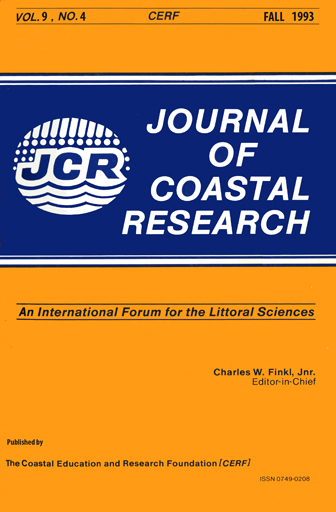A Morphodynamic Model of Sandy Beach Susceptibility to Tar Pollution and Self-Cleansing on the Nigerian Coast
Keywords:
Beach morphodynamics, tar pollution, Nigerian coastAbstract
This report elucidates the application of the beach morphodynamic concept synthesized by WRIGHT and SHORT (1984) to model the susceptibility of a mesotidal sandy beach along the Nigerian coast to, and self-cleansing of, tar pollution. A 21 month, fortnightly inventory of stranded tar balls at a total of 16 shore- normal transects spread over a 6 km stretch of beach was made. Concurrently with the above, beach profile changes and littoral process observations were documented. Due to the generally subtle alongshore differences, particularly of the beach textural and topographic characteristics in the study area, coupled with the semidiurnal tide-related complex changes in the nearshore flow field, regression analyses of tar weight and concentration with certain process parameters were expectedly not always highly correlated. However, there are indications, that the longevity of tar pollution would be higher on modally dissipative beaches. By contrast, the reflective prone counterparts would be more impoverished of tar balls, thus suggesting a higher self cleansing potential. The above results respectively reflect, primarily, the low and high temporal mobility of the beach types. However, the aforementioned patterns were less pronounced along beach sectors fronted by surf zones characterized by temporally-persistent, longshore-bar trough morphologies, probably due to their co-existing dissipative and reflective characteristics. The present results enable a four fold schematization of beach surf zone profile states and a qualitative scaling of their pollution potentials in the course of, and after, an offshore oil spill event.


